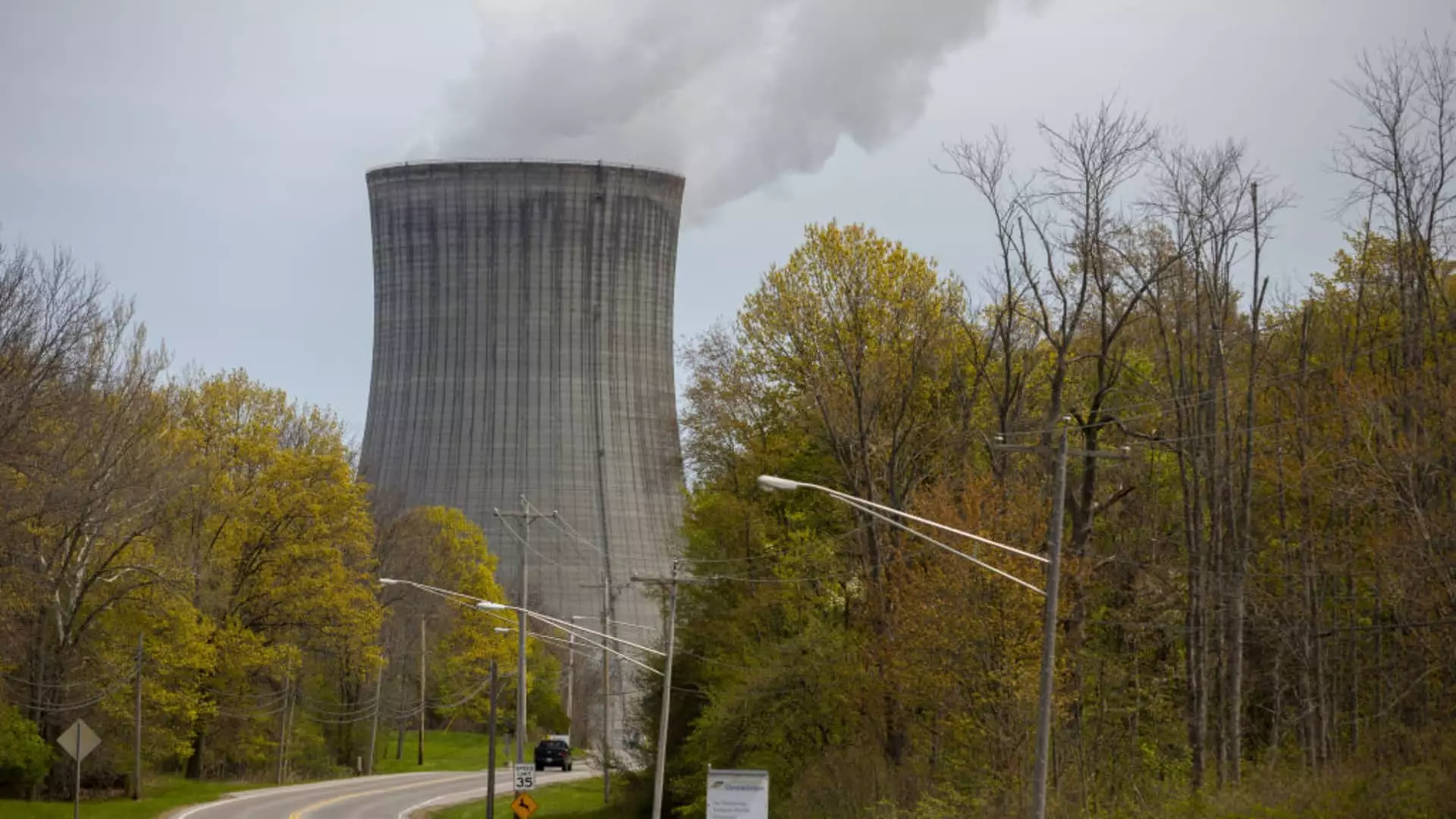Tech companies are now turning to nuclear plants to directly power data centers, driven by the need for clean energy to fuel artificial intelligence. This move has raised concerns among some utilities regarding the potential strain on the electric grid. With the growing power requirements of data centers, which can reach up to a gigawatt, comparable to the capacity of a nuclear reactor, the demand for reliable and sustainable energy sources is surging.
Data centers play a crucial role in the U.S. economy and national security, particularly in the race against rival countries like China in the development of AI technology. Companies like Constellation Energy, which operates a significant portion of the country’s nuclear fleet, are at the forefront of this intersection between tech and energy. The CEO of Constellation Energy, Joe Dominguez, emphasized the need for large-scale energy supply for data centers while also striving for zero-emission sources like nuclear power.
Challenges Faced
As the demand for power continues to rise due to the retirement of coal plants and the expansion of manufacturing and electric vehicles, the strain on power supply becomes more pronounced. This situation is further complicated by the delayed construction of new generation facilities, as highlighted by warnings from grid operators like PJM Interconnection. The situation is particularly tense in data center hubs like northern Virginia, where power supply and demand are reaching critical levels.
The concept of co-locating data centers next to nuclear plants, while promising in terms of efficiency and cost-effectiveness, is not without its controversies. For instance, the deal between Amazon Web Services and Talen Energy to power a data center using a nuclear plant faced opposition from utilities like American Electric Power and Exelon. These companies raised concerns about the potential impact on the grid and existing customers, leading to legal disputes and regulatory intervention.
Industry Perspectives
Despite the challenges and controversies, companies like Talen Energy and Constellation have defended the need for innovative solutions to meet the growing power demands of data centers. FERC’s involvement in the issue and the upcoming conference to address these concerns show the significance of this intersection between energy and technology. The CEOs of major energy companies, including Vistra and Dominion Energy, have expressed openness to exploring co-location options with tech companies to power data centers using nuclear plants.
Future Outlook
As the debate over co-location continues, the spotlight is turning to regions like Texas, with its own grid managed by ERCOT, as potential alternatives for data center developers. The conversation around balancing the power needs of data centers with those of all consumers is gaining traction, highlighting the need for a strategic and sustainable approach to energy supply. The evolving landscape of technology, energy, and regulatory frameworks will shape the future of clean energy solutions for data centers in the United States.
The intersection of tech companies and nuclear plants in the pursuit of clean energy for data centers presents a complex and evolving landscape that requires collaboration, innovation, and regulatory oversight. Balancing the growing power demands of data centers with the need for sustainable energy sources is a critical challenge that will define the future of the tech industry and the energy sector in the United States.

